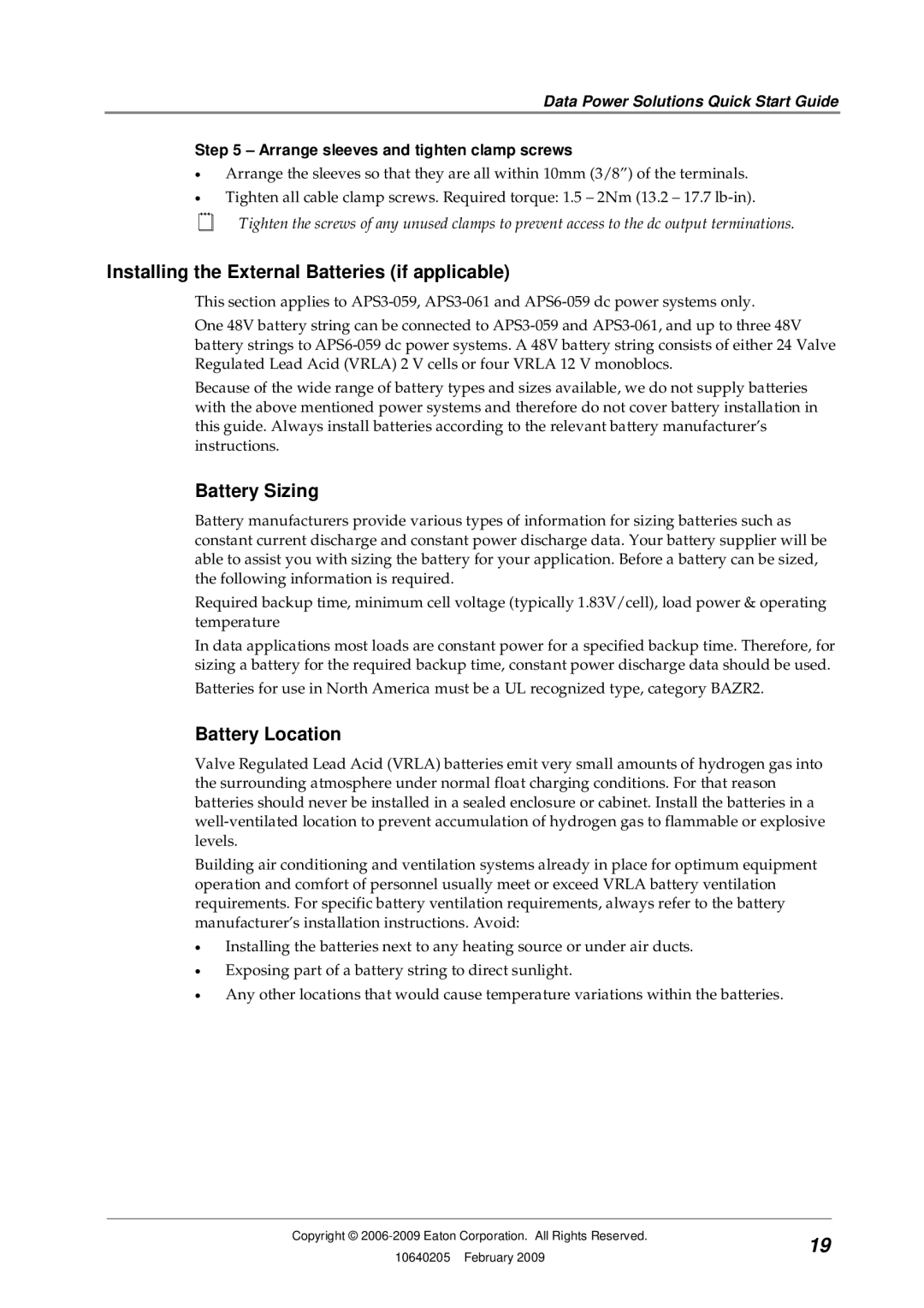
Data Power Solutions Quick Start Guide
Step 5 – Arrange sleeves and tighten clamp screws
•Arrange the sleeves so that they are all within 10mm (3/8”) of the terminals.
•Tighten all cable clamp screws. Required torque: 1.5 – 2Nm (13.2 – 17.7
Installing the External Batteries (if applicable)
This section applies to
One 48V battery string can be connected to
Because of the wide range of battery types and sizes available, we do not supply batteries with the above mentioned power systems and therefore do not cover battery installation in this guide. Always install batteries according to the relevant battery manufacturer’s instructions.
Battery Sizing
Battery manufacturers provide various types of information for sizing batteries such as constant current discharge and constant power discharge data. Your battery supplier will be able to assist you with sizing the battery for your application. Before a battery can be sized, the following information is required.
Required backup time, minimum cell voltage (typically 1.83V/cell), load power & operating temperature
In data applications most loads are constant power for a specified backup time. Therefore, for sizing a battery for the required backup time, constant power discharge data should be used.
Batteries for use in North America must be a UL recognized type, category BAZR2.
Battery Location
Valve Regulated Lead Acid (VRLA) batteries emit very small amounts of hydrogen gas into the surrounding atmosphere under normal float charging conditions. For that reason batteries should never be installed in a sealed enclosure or cabinet. Install the batteries in a
Building air conditioning and ventilation systems already in place for optimum equipment operation and comfort of personnel usually meet or exceed VRLA battery ventilation requirements. For specific battery ventilation requirements, always refer to the battery manufacturer’s installation instructions. Avoid:
•Installing the batteries next to any heating source or under air ducts.
•Exposing part of a battery string to direct sunlight.
•Any other locations that would cause temperature variations within the batteries.
Copyright © | 19 | |
10640205 February 2009 | ||
|
